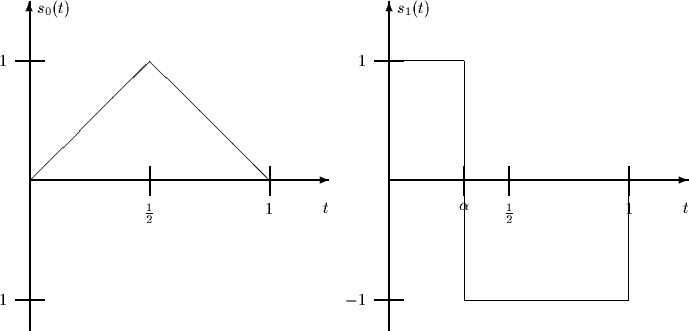


Next: Linear Systems
Up: Collected Problems
Previous: Multi-Path Channels
The following signal set is used to transmit equally likely messages
over an additive white Gaussian noise channel with spectral height  .
.
- 1.
- Draw and accurately label a block diagram of the optimum receiver for
the above signal set.
- 2.
- Compute the probability of error of the optimum receiver for
 .
Distinguish the cases
.
Distinguish the cases  and
and  .
. - 3.
- Assume now that
 and
that the following suboptimum receiver is used.
Find the distribution of R for both cases, s0(t) was transmitted and
s1(t) was transmitted.
and
that the following suboptimum receiver is used.
Find the distribution of R for both cases, s0(t) was transmitted and
s1(t) was transmitted.
- 4.
- How do you have to choose the threshold K in the above receiver to minimize
the probability of a bit error.
- 5.
- Compute the resulting probability of error and compare it to the result from
part (b).
Prof. Bernd-Peter Paris
3/3/1998


